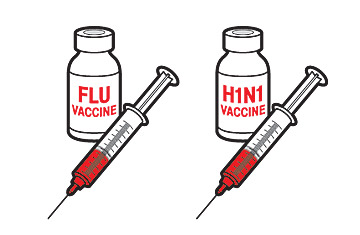
The regular flu vaccine does not contain the 2009 H1N1 flu strain. If the first cases of H1N1 had emerged earlier — in January or February instead of in March — then the novel flu strain might have been part of this fall's yearly flu vaccine. But because the World Health Organization (WHO) decides in February which three influenza strains to include in the next season's vaccine, it was too late to fold in H1N1.
Health officials also chose not to interrupt production of the seasonal-flu vaccine to make room for H1N1; that would have left us with no immunizations at all for the start of the flu season. This way, the seasonal vaccine was delivered on time, with the 2009 H1N1 vaccine close behind. If 2009 H1N1 continues to circulate as one of the main influenza strains this fall and winter, the WHO may decide to include it in the annual vaccine next year.